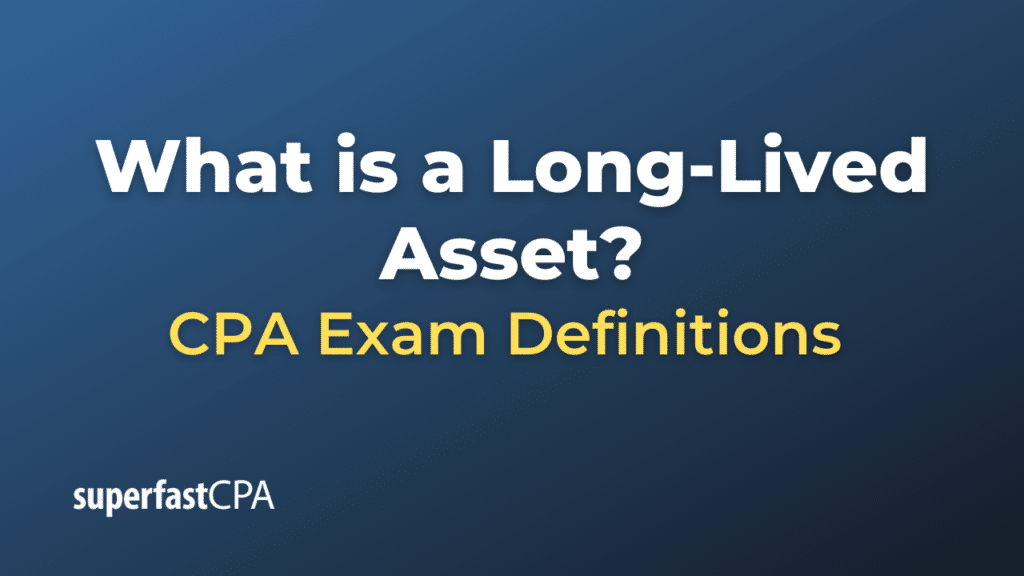Long-Lived Asset
A long-lived asset is a term used in accounting for assets that a business uses over the long term (more than one year) to help generate revenue. These assets are expected to provide economic value to the company for multiple fiscal periods, and they are not easily converted into cash.
Long-lived assets include both tangible and intangible assets:
- Tangible Assets: These are physical assets that a company owns and uses in the production of its income. Examples of tangible long-lived assets include land, buildings, machinery, equipment, and vehicles.
- Intangible Assets: These are non-physical assets that contribute to a company’s earning power. Examples of intangible long-lived assets include patents, trademarks, copyrights, and goodwill.
Long-lived assets are typically capitalized, meaning their cost is recorded as an asset on the balance sheet rather than being immediately expensed. Over time, these assets are depreciated (for tangible assets) or amortized (for intangible assets) to spread their cost over their useful life.
An important aspect of accounting for long-lived assets is the assessment for impairment. If events or circumstances indicate the carrying amount of the asset may not be recoverable, the company must test the asset for impairment. If the asset is considered to be impaired, the company has to write down the value of the asset to its fair value and recognize an impairment loss.
Example of a Long-Lived Asset
Let’s consider a fictitious manufacturing company, “AutoMakers Inc.” to illustrate the concept of long-lived assets.
- Tangible Assets: AutoMakers Inc. owns a large manufacturing plant where its vehicles are assembled. This manufacturing plant is a tangible long-lived asset because it’s a physical asset that will provide economic benefit to AutoMakers Inc. for many years.Similarly, AutoMakers Inc. also owns various pieces of manufacturing equipment, like robotic assembly machines, which are used in the production of vehicles. These pieces of equipment are also tangible long-lived assets.
- Intangible Assets: AutoMakers Inc. has developed a proprietary electric vehicle technology that is patented. This patent is an intangible long-lived asset. It’s not a physical asset, but it provides economic benefits to the company by protecting their exclusive right to use and profit from this technology for a number of years.Another example could be the brand name of AutoMakers Inc., which has been trademarked. The brand name or trademark, while not a physical asset, is considered an intangible long-lived asset because it can provide economic benefits to the company over an extended period by distinguishing their products in the marketplace and building customer loyalty.
Over time, AutoMakers Inc. would depreciate the value of its plant and equipment, and amortize the value of its patent. It would test all these assets for impairment regularly, and if any asset’s value is deemed unrecoverable, an impairment loss would be recognized.













